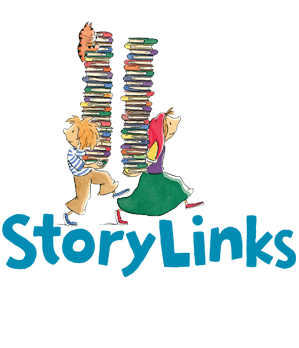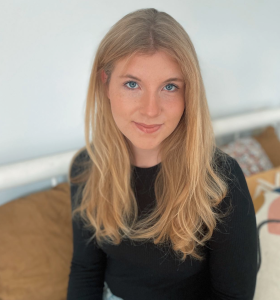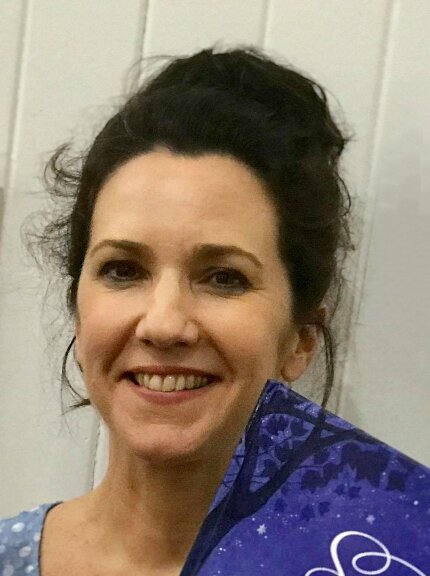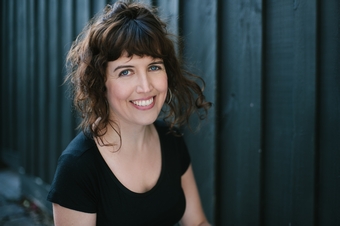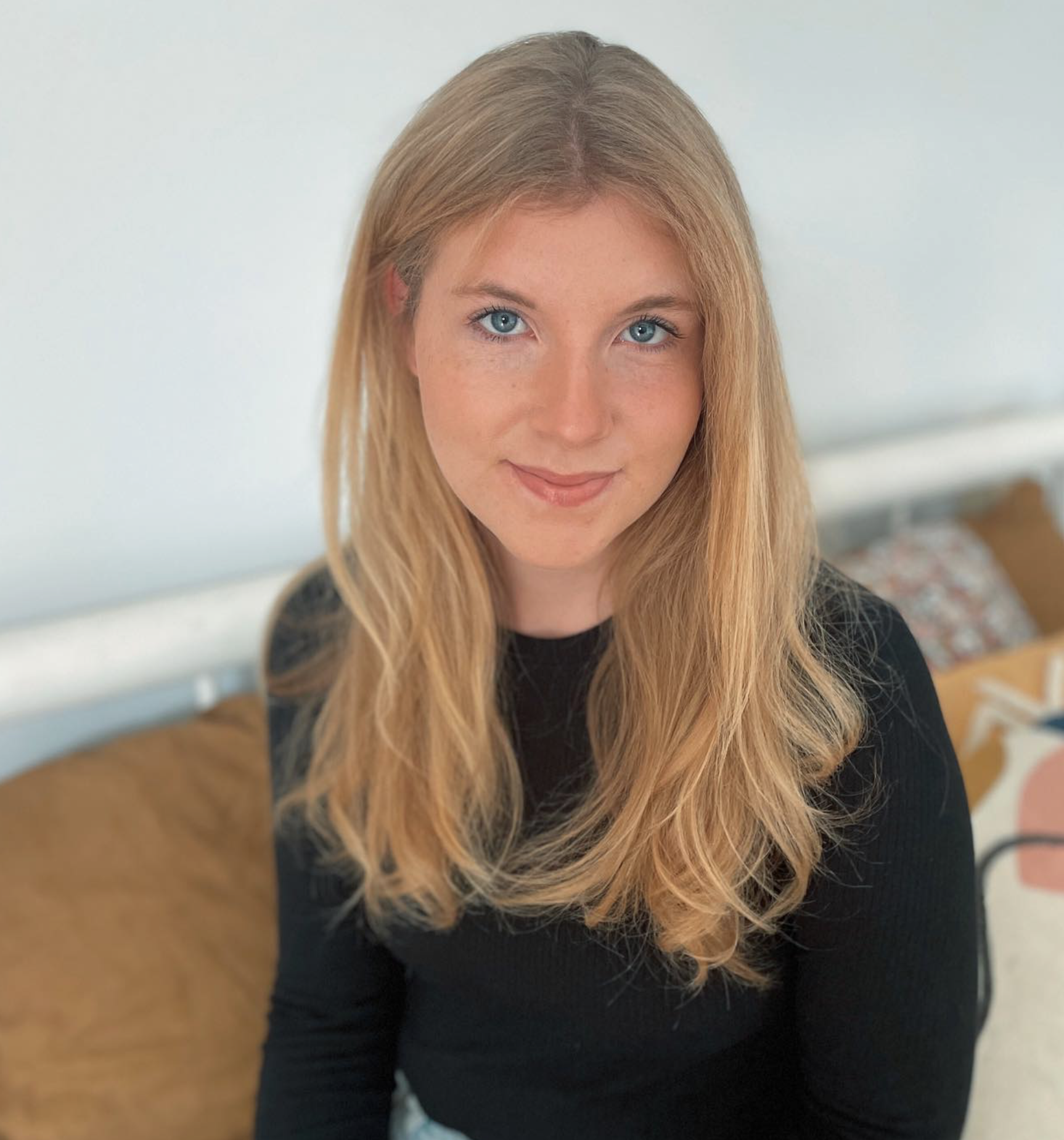
Meet the Artist: Blythe Fielden
The beauty of picture books is the opportunity to illustrate aspects that the text does not include.
After completing her illustration degree at Leeds Arts University in 2021, Blithe now lives in Brisbane, Australia. When not drawing, she can be found reading in the sunshine, practising pilates, running along the river or exploring the botanical gardens.
Blithe is one of the artists exhibiting her work at the 2025 Book Links Exhibition: StoryArt at the Richard Randall Gallery 4 -13 April. She kindly agreed to talk to StoryLinks about her work.
When did you realise that you wanted to be an artist? I can’t remember what sparked the interest of becoming an artist, it’s just something I have always known. I’ve wanted to illustrate picture books since I can remember and the passion just stuck with me throughout my whole life. Art was always my favourite subject at school, and then I went on to study an extended diploma in art & design at college for two years before completing my degree in BA (hons) illustration at Leeds Arts University. I can’t remember my first paid job as an artist. My uncle bought one of my drawings when I was 14 or 15 years old. It was a watercolour painting on regular printing paper (so as you can imagine, the paper had gone quite crinkly), but he said one day it’ll be worth thousands. He paid me £60 (that’s about $120).
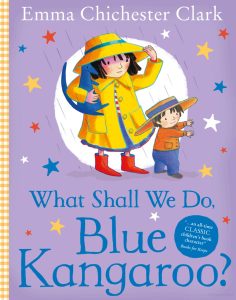 What were your favourite illustrations/illustrator as a child? I think my passion for illustration stems from growing up surrounded by so many books. Judith Kerr, Janet Alhberg, Lauren Child, Mick Inkpen – just to name a few! I loved ‘What Shall We Do, Blue Kangaroo?’ by Emma Chichester Clark, constantly checking it out from the school library. I remember imagining myself in the story and illustrations, it was the perfect world to escape to. ‘Clever Dog, Kip!’ by Benedict Blathwayt is another story I would, and still do, always come back to. It is a wordless picture book, the story is only told through the illustrations*.
What were your favourite illustrations/illustrator as a child? I think my passion for illustration stems from growing up surrounded by so many books. Judith Kerr, Janet Alhberg, Lauren Child, Mick Inkpen – just to name a few! I loved ‘What Shall We Do, Blue Kangaroo?’ by Emma Chichester Clark, constantly checking it out from the school library. I remember imagining myself in the story and illustrations, it was the perfect world to escape to. ‘Clever Dog, Kip!’ by Benedict Blathwayt is another story I would, and still do, always come back to. It is a wordless picture book, the story is only told through the illustrations*.
I believe that these types of stories are just as important for children as it encourages them to use their imagination and own story-telling skills. The story follows the day in the life of a border collie living on a farm somewhere in the English countryside. It feels very familiar, nostalgic in a way. It reminds me of family holidays I had growing up in The Lake District, Wales, Devon and the Yorkshire Dales in the UK. I also always wanted a border collie when I was small, so Kip seemed like the perfect dog! (Another dream that became a reality and my family ended up getting a border collie – Reacher! Reacher may have made an appearance in Dinosaur In My Pocket too.)
*Upon further research, I don’t believe the original copy is wordless. I’m referring to the copy included in the book: ‘My Best Book of Animal Stories: 10 great tales for all animal lovers’ (Random House Children’s Book, 2002)
What is your preferred medium to work in? I work predominantly in Procreate on my ipad, though I do prefer working with more traditional mediums. I use my ipad for most projects because it’s quicker if you need to make changes, adjust colours or layers. However, my goal when working digitally, is to keep the lines and marks as organic as I can, as if I were working with real pencils and crayons. I love layering different lines and textures.
 How would you describe your art style? My style is forever changing and I find myself still finding a “style” that works for me. I think there is a lot of pressure in the children’s book industry to have a unique style that stands out from the rest, but that pressure can often lead to your work feeling less and less authentically you! I think personal style comes with patience and time. It may feel frustrating whilst you wait, but one day your drawing style will click and everything will fall into place.
How would you describe your art style? My style is forever changing and I find myself still finding a “style” that works for me. I think there is a lot of pressure in the children’s book industry to have a unique style that stands out from the rest, but that pressure can often lead to your work feeling less and less authentically you! I think personal style comes with patience and time. It may feel frustrating whilst you wait, but one day your drawing style will click and everything will fall into place.
Where and when and how do you work? I am fortunate enough to have my own art studio space at home (well, it’s in the garage). It’s a great space to get creative but also handy to leave behind at the end of the day, and an opportunity to switch off outside working hours. I would love to be productive at early hours in the morning, but I think I actually work better at night.
 When commissioned a new project, I like to have a read through the brief and sketch some initial ideas out. These are very simple and rough. There was a dinosaur exhibition at Queensland Museum when I was assigned for ‘Dinosaur In My Pocket’, which allowed the perfect opportunity to do some sketchbook work as a warm up for this project. Some of my very early sketches can be found in the book itself, but this isn’t always the case. I like to work on thumbnails by hand too, then when I have a clearer idea of what the layout looks like, I switch to the ipad.
When commissioned a new project, I like to have a read through the brief and sketch some initial ideas out. These are very simple and rough. There was a dinosaur exhibition at Queensland Museum when I was assigned for ‘Dinosaur In My Pocket’, which allowed the perfect opportunity to do some sketchbook work as a warm up for this project. Some of my very early sketches can be found in the book itself, but this isn’t always the case. I like to work on thumbnails by hand too, then when I have a clearer idea of what the layout looks like, I switch to the ipad.
Working on the ipad means I can move the composition about without redrawing the whole rough again. Then it’s time to work on the final pieces – like I mentioned before, Procreate is my go-to medium, however I sometimes play around with gouache paint, scan it and once it’s uploaded to my ipad, I layer it with digital brushes. Outside commissions, I like playing around with more traditional media in my illustrations, which one day I hope to apply in future projects.
What are the challenges of working with a writer as opposed to creating both text and art. Do you have a preference/ambition? Is there a writer you would like to work with? There is a lot of pressure when it comes to illustrating a book written by another author. I know some authors hand over the manuscript with an open mind and allow the illustrator to draw what feels most natural through the text, but many others have a somewhat idea of what the main character looks like, where the story is set and even if they have a companion which isn’t mentioned in the text. The beauty of picture books is the opportunity to illustrate aspects that the text does not include. I can understand if an author has a particular idea for the picture but I do prefer a bit of freedom. It can be hard to follow a detailed plan of what should and shouldn’t be included in a spread. I think if an author has seen your previous work and likes what they see, they are more open for interpretation. I hope to write and illustrate my own book one day!
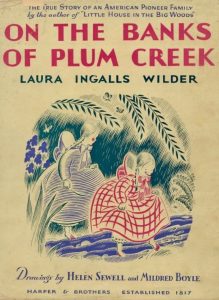 Is there an iconic children’s work that you would like to illustrate? The Little House book series by Laura Ingalls Wilder would be a dream! A favourite memory of mine is my dad reading these stories at bedtime. With the descriptive writing, it’s not hard to imagine what Laura’s house looked like in ‘the big woods’ or ‘Plum Creek’ but that’s also why I would love to illustrate it – because my imagination for the story is so clear.
Is there an iconic children’s work that you would like to illustrate? The Little House book series by Laura Ingalls Wilder would be a dream! A favourite memory of mine is my dad reading these stories at bedtime. With the descriptive writing, it’s not hard to imagine what Laura’s house looked like in ‘the big woods’ or ‘Plum Creek’ but that’s also why I would love to illustrate it – because my imagination for the story is so clear.
During my second year in university, I made a series of 3 stop-motion animations of moments that stood out to me in the saga. I loved the outcomes and it is something I hope to revisit later this year.
Is/are there artist/s working today that you admire? Cara Rooney is an illustrator based in Dundee, Scotland – I find her approach to illustration very fascinating and a reminder to be playful and not too serious when making work.
Can you tell us something about the pieces that you are going to exhibit at the Richard Randall Art Studio? There will be lots of dinosaurs, a few animals, colour and scribbles! I want to show people the true magic that goes into the making of a picture book which you rarely get to see.
Books by Blithe Fielden
Dinosaur In My Pocket, Ashleigh Barton (Hachette AUZ)
Jack and The Jellybeans, Katie Dale (Oxford University Press)
Taronga: Big Book of Animals (Penguin Random House AUZ)
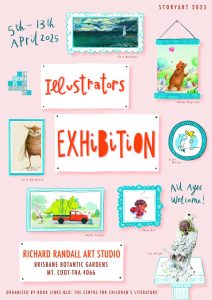 Come and explore Blithe’s work (bring your children 🙂 and that of the other fabulous artists exhibiting at the annual StoryArt Exhibition at the Richard Randall Art Studio this April, from Saturday 5th for one week. Books and artworks will be available for purchase. Join us for UP LATE on Friday 4 April, from 5:00pm @Richard Randall Art Studio, Mt Coot-tha Botanic Gardens. Free admission – bookings open now.
Come and explore Blithe’s work (bring your children 🙂 and that of the other fabulous artists exhibiting at the annual StoryArt Exhibition at the Richard Randall Art Studio this April, from Saturday 5th for one week. Books and artworks will be available for purchase. Join us for UP LATE on Friday 4 April, from 5:00pm @Richard Randall Art Studio, Mt Coot-tha Botanic Gardens. Free admission – bookings open now.
This year’s artists are:
Niña Nill – Kittens Do Not Care For Baths by Ali Rutstein, Published by Hardie Grant, Oct 2024; Ladybirds Do Not Go To Day Care written by Ali Rutstein, Published by Hardie Grant, Nov 2023; We’re Moving Away Hardie Grant Aug 2023
Sue Wright – polymer clay sculptures of mythical and fictional creatures, Tiny Owl
Terry Whidborne
Clare McFadden – The Book of Hours published by Walker Books April 2024; The Flying Orchestra published by UQP 2019 (Watch free on the digital stage at QPAC. Click Watch now for a 43 min show. Create a login if not used previously.) Traditional art and prints.
Blithe Fielden – Dinosaur in My Pocket (Ashleigh Barton) Published by Lothian (Hachette) March 2024
Hélène Magisson – Mumma Bear by Rory Mather Published by Scholastic March 2025; Noisy Noisy City written by Andrew Kelly published by Wild Dog Books, 1st of May 2025; Willow’s Gumboots by Beverley McWilliams Published by Midnightsun (October 2024); All About Magical Creatures Written by Izzy Quinn Published by Hardie Grant Publishing (December 2024) Traditional media and prints
Brent Wilson – Frog, Log & Dave Almost Save the Day by Trent Jamieson Published by Penguin 4 March 2025; Laugh in the Bath by Rory Mather Published by Affirm Press January 2025; Mr Impoppable by Trent Jamieson Larrikin House May 2024

